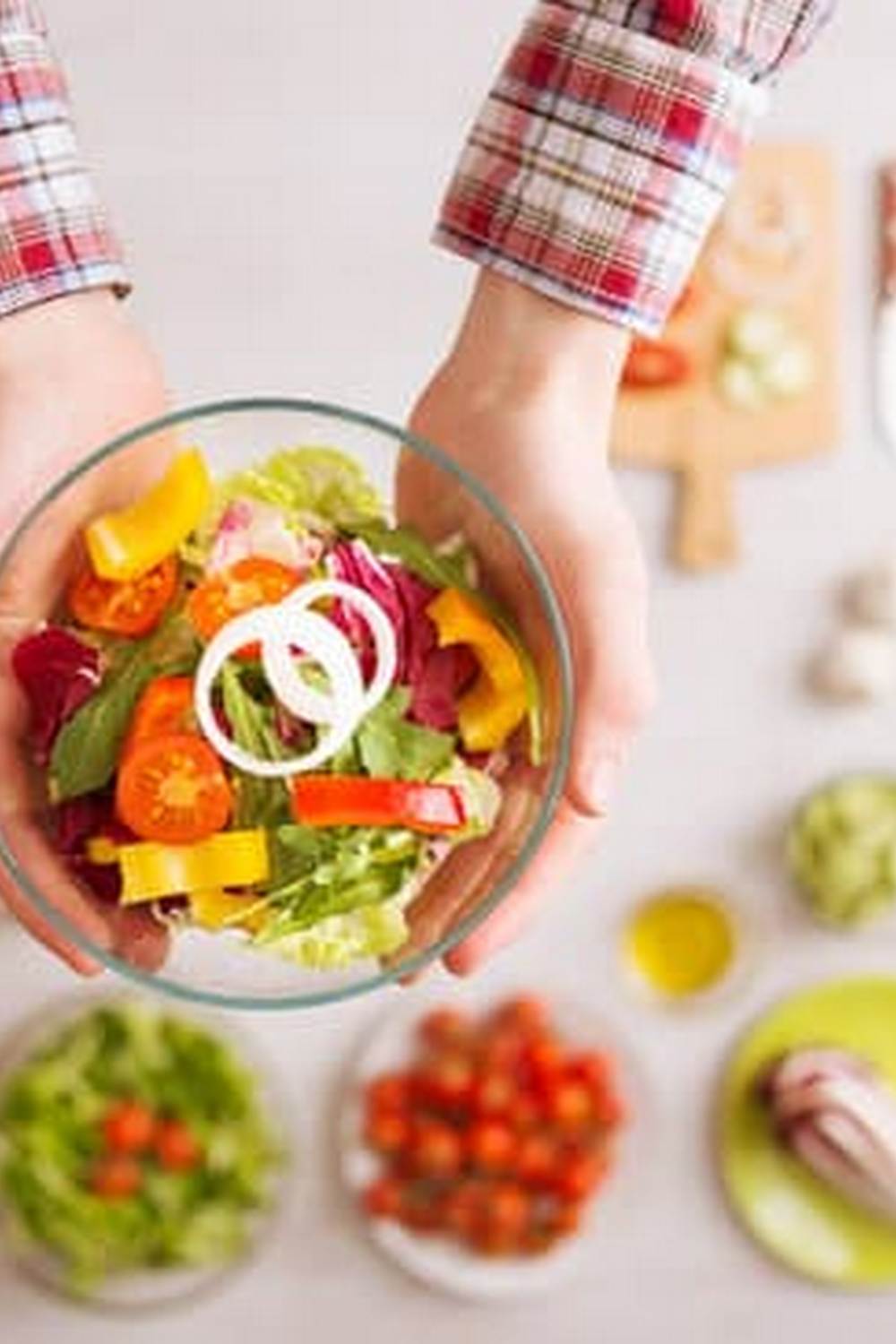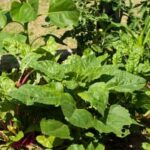Are you interested in starting your own vegetable garden but don’t have a lot of space? Look no further. Vegetable gardening in pallets is a creative and practical way to grow your own produce, even in limited areas. Pallet gardening has gained popularity in recent years for its versatility and accessibility, offering a sustainable and eco-friendly solution to urban gardening challenges.
The concept of using pallets for gardening involves repurposing wooden pallets commonly used in shipping and transportation. This method allows you to create raised beds or vertical gardens, making it ideal for small yards, balconies, or even indoor spaces. Not only does this approach offer convenience and flexibility, but it also provides numerous benefits for both the environment and the gardener.
A brief history of using pallets for gardening reveals that this innovative practice originated as a way to maximize space and minimize waste. By utilizing pallets as planters or garden structures, individuals can engage in sustainable practices while enjoying the satisfaction of growing their own food.
In this article, we will explore the various aspects of vegetable gardening in pallets, including choosing the right pallets, preparing them for gardening, selecting suitable vegetables, planting and caring for them, maximizing space and yield, as well as promoting sustainability and eco-friendliness. Whether you’re a novice gardener or an experienced green thumb looking for new ideas, vegetable gardening in pallets offers endless possibilities for cultivating a fruitful harvest.
Choosing the Right Pallets
When it comes to vegetable gardening in pallets, choosing the right pallets is crucial for the success of your garden. Here are some factors to consider when selecting pallets for your gardening endeavors:
- Condition: Look for sturdy and undamaged pallets that are free from rot and chemical residues. You want to ensure that the pallets are in good condition to provide a healthy environment for your vegetables.
- Type of Wood: Opt for untreated or heat-treated wood pallets, as these are safe for growing edible plants. Avoid using pallets made from pressure-treated or chemically treated wood, as they can leach harmful substances into the soil.
- Size and Design: Consider the size and design of the pallets based on the space you have available for gardening. Choose pallets that fit your gardening area and allow enough room for planting your desired vegetables.
There are different types of pallets that are suitable for vegetable gardening. Some options include Euro pallets, block pallets, and plastic pallets. Euro pallets are known for their durability and stability, making them ideal for creating raised bed gardens. Block pallets have solid blocks at each corner, providing additional support and strength for heavier loads. Plastic pallets offer water resistance and durability, making them suitable for outdoor use.
If you’re wondering where to find suitable pallets for gardening, there are several options available. Local businesses such as warehouses, factories, or construction sites often have surplus or used pallets that they may be willing to give away or sell at a low cost. Additionally, you can check online platforms such as Craigslist or social media marketplace groups where people often post listings offering free or inexpensive used pallets.
Overall, choosing the right pallets is an essential step in setting up a successful vegetable garden in pallets. By considering factors such as condition, type of wood, size, design, and where to find them, you can ensure a healthy and productive gardening experience.
Keyword: vegetable gardening in pallets
Preparing the Pallets
Step-by-Step Guide on How to Prepare the Pallets for Gardening
Before you start planting your vegetables in pallets, it’s important to properly prepare the pallets to ensure a healthy and productive garden. The first step is to choose the right pallets, making sure they are made of untreated wood and free from any chemicals that could leach into the soil.
Once you have the right pallets, you’ll need to clean them thoroughly to remove any dirt, debris, or potential contaminants. You can use a stiff brush and soapy water to scrub the pallets clean, making sure to pay special attention to corners and crevices.
After cleaning, it’s important to treat the wood to prolong its lifespan and protect it from moisture and rot. You can do this by applying a coat of environmentally-friendly wood sealant or linseed oil. This will also create a barrier between the soil and the wood, preventing any potential leaching of harmful substances into your vegetables.
Tips on Cleaning and Treating the Pallets for Safe and Healthy Gardening
In addition to cleaning and treating the pallets, there are some other important safety measures to consider when preparing them for vegetable gardening. It’s crucial to check for any protruding nails or splinters that could pose a hazard, as well as ensuring that no sharp edges or rough spots are present.
To further ensure safe and healthy gardening conditions, you may also want to line the inside of the pallet with landscape fabric or heavy-duty plastic sheeting before adding soil. This will help prevent soil erosion and keep your vegetables from coming into contact with potentially harmful substances.
Creative Ways to Customize the Pallets for Gardening
Once your pallets are clean, treated, and lined, get creative with customization. Consider painting or staining the outside of the pallets to match your garden aesthetic or labeling each section for easy organization. You can also add hooks or shelves for storing small tools or placing potted herbs. Don’t be afraid to let your imagination run wild as you transform your ordinary pallets into functional works of art for your vegetable gardening in pallets project.
Selecting the Right Vegetables
The key to successful vegetable gardening in pallets is selecting the right vegetables to grow in a limited space. When it comes to choosing the right vegetables for pallet gardens, there are several factors to consider.
First, it’s important to select vegetables that are well-suited for vertical gardening and can thrive in the confined space of a pallet. Some of the most popular vegetables for pallet gardens include lettuce, spinach, radishes, and herbs such as basil, parsley, and cilantro.
Another important consideration when selecting vegetables for pallet gardening is the growth habits of the plants. It’s essential to choose compact or dwarf varieties that won’t overwhelm the limited space of a pallet. Additionally, fast-growing vegetables are ideal for pallet gardens because they provide a quicker turnaround time from planting to harvest.
One creative technique for maximizing the productivity of a pallet garden is to practice intercropping and companion planting. Intercropping involves growing two or more different types of vegetables together in one pallet, making efficient use of space by allowing plants with different root depths and growth patterns to share the same area. On the other hand, companion planting involves growing compatible plants next to each other to provide mutual benefits such as pest control and improved pollination.
In summary, when selecting vegetables for pallet gardening, it’s important to choose varieties that are well-suited for vertical gardening and have compact growth habits. Practicing intercropping and companion planting can also help maximize the yield from a limited space while promoting healthy plant growth. With careful planning and consideration, vegetable gardening in pallets can be both productive and rewarding.
| Vegetable | Use |
|---|---|
| Lettuce | Salad greens |
| Spinach | Leafy greens |
| Romaine lettuce | Leafy greens |
Planting and Caring for the Vegetables
When it comes to vegetable gardening in pallets, planting and caring for the vegetables is an essential aspect that requires attention and proper techniques. In this section, we will discuss detailed instructions on how to properly plant vegetables in pallets, provide tips on watering, fertilizing, and maintaining the vegetables in pallet gardens, and address common challenges and their solutions.
Planting Vegetables in Pallets
When planting vegetables in pallets, it is important to ensure proper spacing between plants to allow for adequate growth. Depending on the type of vegetable being grown, you may need to consider the depth of the pallet and adjust accordingly. Additionally, using quality soil is crucial for successful vegetable gardening. Adding organic matter such as compost can help improve soil fertility and provide necessary nutrients for the plants.
Caring for Vegetables in Pallet Gardens
Regular watering is essential for vegetable plants growing in pallets. Since pallets have limited space and soil volume, they may dry out quickly, especially during hot weather. It’s important to monitor the moisture level of the soil and water accordingly. Fertilizing with a balanced fertilizer or organic nutrients can help promote healthy plant growth and increase yield.
Common Challenges and Solutions
One of the common challenges faced in vegetable gardening in pallets is pest control. Due to the confined space of pallet gardens, pests like aphids or slugs can cause damage to the plants. Implementing natural pest control methods such as companion planting or using organic pesticides can help mitigate these issues. Another challenge is maintaining consistent moisture levels, particularly during periods of extreme weather conditions. Mulching can help retain moisture and protect plant roots from drying out.
By following these planting and care guidelines for vegetable gardening in pallets, individuals can successfully grow a variety of vegetables while maximizing their use of space effectively.
Maximizing Space and Yield
When it comes to vegetable gardening in pallets, maximizing space is essential, especially if you have limited area for your garden. One of the best ways to achieve this is by using vertical gardening techniques. Pallets are perfect for this purpose as they can be easily mounted on walls or fences, allowing you to grow your favorite vegetables without taking up valuable ground space.
Intercropping and companion planting are also effective strategies for increasing yield in pallet gardens. By planting complementary vegetables together, you can optimize the use of space and resources while also improving the overall health of your plants. For example, tall or climbing vegetables like tomatoes or cucumbers can be grown alongside smaller plants like lettuce or herbs.
Another way to maximize space and yield in your pallet garden is through proper harvesting and preserving techniques. Harvesting your vegetables when they are at their peak maturity ensures that you get the most out of your garden. Additionally, learning how to properly preserve your harvest through methods like canning, freezing, or pickling allows you to enjoy the fruits of your labor well beyond the growing season.
In summary, by implementing these space-saving and yield-boosting strategies, you can make the most out of your vegetable gardening in pallets. Whether you’re dealing with a small urban space or simply looking for creative ways to expand your garden, utilizing vertical gardening, intercropping, and proper harvesting and preserving techniques can lead to a bountiful harvest from your pallet garden.
| Maximizing Space and Yield Strategies | Benefits |
|---|---|
| Vertical Gardening | Optimizes use of limited ground space |
| Intercropping/Companion Planting | Improves plant health and optimizes resource use |
| Proper Harvesting and Preserving | Allows for extended enjoyment of the harvest |
Sustainability and Eco-Friendliness
Vegetable gardening in pallets offers not only a practical way to grow your own produce but also has sustainability and eco-friendliness benefits. By repurposing pallets for gardening, you are contributing to reducing waste and minimizing environmental impact. Here are some ways in which vegetable gardening in pallets promotes sustainability:
1. Upcycling and Repurposing: Pallets are often discarded or left unused after they have served their original purpose. By using them for gardening, you are giving them a new life and preventing them from ending up in landfills. This upcycling and repurposing of materials align with the principles of sustainable living.
2. Reduced Carbon Footprint: Vegetable gardening in pallets can be done right at home, reducing the need for transportation and fuel consumption associated with purchasing produce from grocery stores. This localized approach to food production minimizes carbon emissions and contributes to a smaller carbon footprint.
3. Minimized Use of Chemicals: When properly prepared and maintained, pallets can provide a safe environment for growing vegetables without the need for harmful pesticides or chemicals. This organic approach to gardening reduces the overall use of synthetic substances that can have detrimental effects on the environment.
In addition, by participating in the practice of vegetable gardening in pallets, individuals can learn about sustainable practices such as composting, water conservation, and natural pest control methods. It encourages a deeper connection with nature and an appreciation for the resources available for sustainable living.
Moreover, the creative aspect of pallet gardening allows individuals to explore innovative ways to use recycled materials while creating unique garden spaces that bring beauty into their surroundings without harming the environment. The possibilities for utilizing pallets in sustainable gardening are vast, making it an exciting endeavor for those interested in living more eco-friendly lifestyles while enjoying the rewards of homegrown vegetables.
Inspirational Pallet Garden Ideas
When it comes to vegetable gardening in pallets, the possibilities are endless. The use of pallets as a gardening tool has gained popularity in recent years due to its practicality and versatility. With limited space and resources, individuals have turned to pallets as an innovative solution for growing their own vegetables. Not only does this method promote sustainability by repurposing materials, but it also allows for creative and customizable garden designs.
One of the most appealing aspects of using pallets for vegetable gardening is the opportunity for creativity and innovation. Pallets can be easily customized to fit the specific needs and preferences of the gardener.
From vertical gardens to unique plant arrangements, there is no limit to what can be achieved with a little imagination and some basic DIY skills. By showcasing different pallet garden designs, individuals can gain inspiration and confidence to explore new and unique ways of maximizing their garden space.
In addition to creative designs, inspirational pallet garden ideas also come from success stories and testimonials from experienced pallet gardeners. Hearing about the triumphs and challenges faced by others in their pallet gardening journey can provide valuable insight and motivation for beginners. Whether it’s overcoming initial struggles or celebrating a bountiful harvest, these stories serve as a source of encouragement and learning for those interested in venturing into vegetable gardening in pallets.
Conclusion
In conclusion, vegetable gardening in pallets offers a multitude of benefits and advantages for both experienced gardeners and beginners. The use of pallets for gardening not only provides a sustainable and eco-friendly way to grow vegetables but also allows for creative customization and space-saving solutions. By repurposing and upcycling pallets, gardeners can create unique and innovative garden designs while minimizing environmental impact.
Through this article, readers have learned about the various aspects of vegetable gardening in pallets, from choosing the right pallets to preparing them for gardening, selecting suitable vegetables, planting and caring for them, maximizing space and yield, as well as promoting sustainability and eco-friendliness. With the practical tips and insightful information provided, readers are encouraged to try their hand at pallet gardening and share their experiences with the growing community.
As more people embrace sustainable living practices and seek alternatives for traditional gardening methods, vegetable gardening in pallets continues to gain popularity. Whether it’s through vertical gardening or creating personalized garden spaces, there are endless possibilities for utilizing pallets in vegetable gardening. As such, readers are invited to explore further resources and join the growing community of pallet gardeners to exchange ideas, success stories, inspirational designs, and practical advice on achieving successful vegetable gardens in pallets.
Frequently Asked Questions
What Vegetables Can I Grow in a Pallet?
You can grow a variety of vegetables in a pallet, including lettuce, herbs, radishes, carrots, and even smaller varieties of tomatoes and peppers. Pallets can be used vertically or horizontally for different types of plants.
Is It Safe to Grow Vegetables in Pallets?
It is generally safe to grow vegetables in pallets as long as the pallets are untreated or have been heat-treated rather than chemically treated. Make sure to use a food-grade plastic liner if you’re concerned about contamination from the wood.
Can You Plant Tomatoes in a Pallet Garden?
Yes, you can plant tomatoes in a pallet garden. They will require a deep enough container within the pallet to accommodate their root system, and they’ll need support as they grow. With proper care and maintenance, tomatoes can thrive in a pallet garden just like in traditional soil beds.

If you’re looking to get into vegetable gardening, or are just looking for some tips on how to make your current garden better, then you’ve come to the right place! My name is Ethel and I have been gardening for years. In this blog, I’m going to share with you some of my best tips on how to create a successful vegetable garden.





